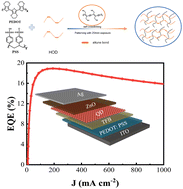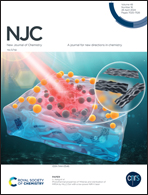Abstract
Poly(3,4-ethylene dioxythiophene)/poly(styrene sulfonic acid), abbreviated as PEDOT:PSS, is widely used in light-emitting diodes, solar cells, sensors, and other functional devices due to its high conductivity, transparency, and solution processability. In this study, the photo-reactive cross-linking agent 2,4-hexadiyne-1,6-diol (HOD) was introduced for a comparative study of photo-crosslinking in PEDOT:PSS AI 4083 (denoted as 4083) and PEDOT:PSS PH1000 (denoted as PH1000). The results showed that the aggregation state of 4083 was different from that of PH1000, ascribed to the composition of 4083 and PH1000 and the mechanism of the photo-crosslinking agent. Based on these findings, quantum dot light-emitting diode (QLED) devices were fabricated using direct photo-crosslinking PH1000. The work function based on PH1000 as a hole-injected layer (HIL) was increased from 5.03 eV to 5.22 eV, and the external quantum efficiency (EQE) was increased from 17.2% to 18.9%. This result provided a feasible solution for the application of PH1000 in high-performance QLED displays.



 Please wait while we load your content...
Please wait while we load your content...